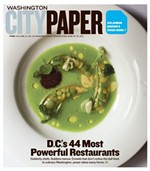The Passion of the Heist
Rob a bank and you’re scum. Rob a museum and you’re scum with a dash of sophistication and an incredible amount of cunning. Yes, Rebecca Dreyfus’ Stolen joins The Thomas Crown Affairs, Entrapment, and even Oceans 12 on the long list of flicks that portray stealing works of art as an especially glamorous and elevated form of crime. Her freshman documentary explores the mystery of the 1990 robbery of Boston’s Isabella Stewart Gardner Museum. The band of thieves who overtook the guards and made off with 13 masterworks on a mid-March morning have yet to be found. And the whereabouts of each painting, collectively believed to be worth hundreds of millions of dollars, is still unknown.
Gardner, a grande dame who loved all things Italian, established her museum in 1903 and designed it to evoke a Venetian palazzo. She meticulously laid out her collection and dictated that nothing about the museum should ever be changed—a result, some speculate in the film, of the death of Gardner’s 2-year-old son and her subsequent desire never to lose something she loved again. Dreyfus weaves a minibiography of Gardner throughout Stolen, focusing on her passionate disposition, magnetic personality, and allegedly impressive figure.
Dreyfus no doubt included this character study to help round out the 85-minute movie, but it’s also an effective way to make this particular heist seem personal. Who, for example, could remain unmoved watching Frank DiMaria, a Gardner gallery attendant, tell Dreyfus of when he first saw John Singer Sargent’s portrait of the founder at age 13—and then reveal that she telepathically told him, “You’re mine, and you’ll know me all your life”? OK, the guy’s a little wild-eyed, and he goes so far as to say Gardner “adopted” him, but it’s still touching.
Stolen also includes commentary from a variety of experts, including Tom Mashberg, a Boston Herald reporter who spent a year trying to chase down one of the Gardner’s missing Rembrandts, and Tracy Chevalier, a Vermeer enthusiast who wrote the novel Girl With a Pearl Earring. (The most valuable painting snatched was Vermeer’s The Concert, which gets significant explication here.) But it’s 75-year-old art detective Harold Smith who provides the documentary’s real narrative momentum as Dreyfus tails him dissecting the case that became his obsession. A genial, quick-witted man who’s rarely dressed in anything but a suit and bowler hat, Smith livens up a story that could have easily become torpid and pedantic.
The director allows a little of Smith’s personal life into the film, which was unavoidable: The gumshoe wears an eye patch, a prosthetic nose, and bandages that seem to be the only things holding together the patchy flesh of his face. Cancer is the cause; remarkably, Smith has battled the illness for decades, in the process undergoing an experimental dry-skin treatment as a young Marine.
Granted, this has nothing to do with the crime. But watching the disease-riddled, restlessly curious man in action is fascinating. When he’s talking with Stolen’s several notorious art thieves—one of whom, William Youngworth, is particularly brash in his declaration that, if the government guaranteed amnesty, it’d get the paintings within 30 minutes—his desire for knowledge and drive to solve puzzles beam as brightly as the sun. The film’s only distraction from the consistently compelling investigation is Dreyfus and Albert Maysles’ often annoying camerawork: Faces are zoomed in on so tightly that it can be Ed Wood–esque, and once in a while interviewees suddenly start bobbling. But the unnecessary stylization never approaches the level of that in Jessica Yu’s In the Realms of the Unreal, which animated Henry Darger’s already movement-filled illustrations.
Granted, the film can occasionally seem parodically snooty, especially when Blythe Danner delivers her arch readings of Gardner’s letters to her art procurer, Bernard Berenson (voiced by the excellently cast Campbell Scott). And eyes may roll when one interview subject pronounces the theft “unconscionable”—this is, after all, a world filled with rape, murder, and war—and another melodramatically claims that the museum is “now touched with evil.” (A more objective assessment comes from Mashberg, who simply says the heist was “rude.”) But between the parade of did-they-or-didn’t-they crooks and the wild directions the investigation takes—Smith finds fingers pointing to the IRA, Sen. Edward Kennedy, and the Catholic Church, among others—Stolen is about as philistine-pleasing as an art doc can be. CSI: Fine Art? Not quite. But it’s glamorously close.

